The post Let’s Get Physical —Therapy, That Is by Sassafras Lowrey appeared first on Dogster. Copying over entire articles infringes on copyright laws. You may not be aware of it, but all of these articles were assigned, contracted and paid for, so they aren't considered public domain. However, we appreciate that you like the article and would love it if you continued sharing just the first paragraph of an article, then linking out to the rest of the piece on Dogster.com.
As veterinary care advances and increasingly mirrors human medicine in terms of treatment options, physical therapy has become increasingly common for dogs. Canine physical therapy can include heat, massage, structured exercise and more to treat disease, aid in recovery from injury or surgery and support general wellness.
“Almost any dog could benefit from rehab at some point in their lives,” explains Jo Moyes, licensed veterinary medical technician (LVMT) and certified veterinary canine massage and rehabilitation technician (CVMRT) at the Amelia Peabody Canine Rehabilitation Center in Chattanooga, Tennessee.
Marti Drum, DVM, PhD, CCRP, CERP, and Clinical Assistant Professor of Small Animal Physical Rehabilitation at the University of Tennessee also says that in her experience “the most common canine patients to present for rehabilitation are dogs with osteoarthritis or cruciate ligament injury/disease.” She notes this is actually the same with human physical therapy.
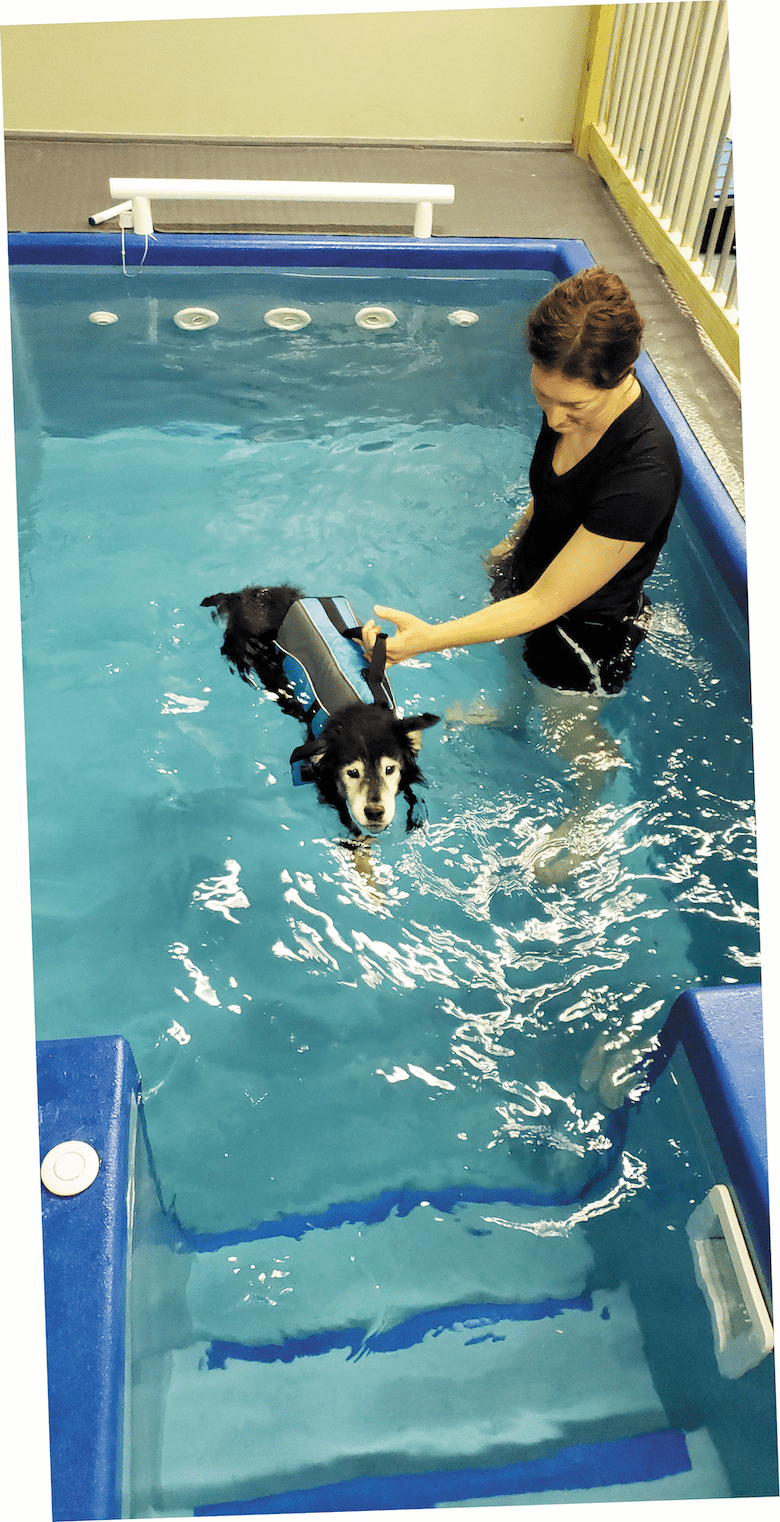
Courtesy Jo Moyes | The Amelia Peabody Canine Rehabilitation Center
Dogs who can also benefit from physical therapy include those with spinal cord injuries and developmental disorders as well as brain disease, cardiac patients and dogs with shoulder and groin injuries. If your dog has had any kind of orthopedic surgery, being seen by a rehab specialist should be mandatory — although not all surgeons automatically make a referral to a specialist. Often this is a place where dog owners need to advocate for their dogs, do their own research and ask for referrals from their surgeon — not wait for the surgeon to suggest physical therapy.
Related: Signs of Arthritis in Dogs — Recognizing Dog Arthritis Symptoms Early and Treating Them
Canine rehabilitation specialist Mandi Blackwelder, DVM, CCRP, of Healing Arts Animal Care in Beaverton, Oregon, makes the comparison, “If you had knee surgery and your surgeon said go home and stay in bed for six weeks, only get up to go pee, and then you can run and play and do everything you want — that doctor would be sued for malpractice, and yet that is what we do with our animals.” Many vets order strict crate rest after a dog is injured, when what dogs really need is to be kept from running around and reinjuring themselves, plus regular structured physical therapy to prevent muscle loss and promote healing.
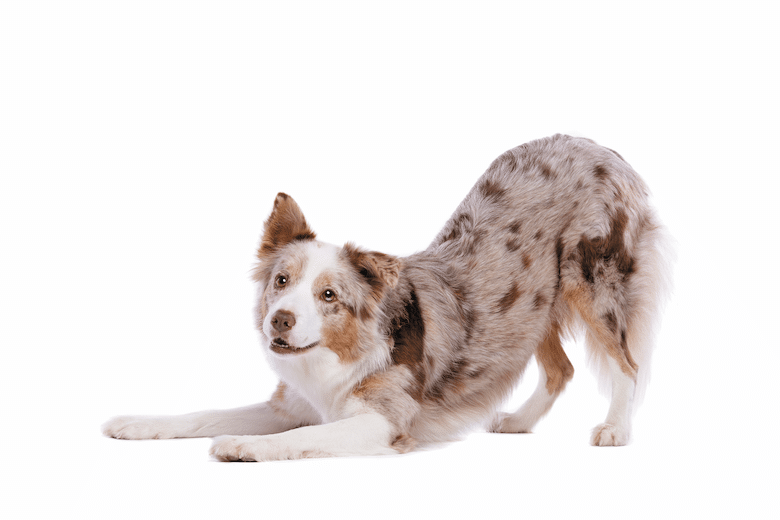
Photo: Eriklam | Getty Images
Types of dog physical therapy
There are a variety of physical therapy modalities regularly used with dogs. These frequently include:
„ ice and heat transcutaneous electrical nerve stimulation (also known as TENS units) cold laser therapy
„ hydrotherapy (includes underwater treadmill, which allows dogs to maintain and build muscle while remaining low impact on the injured part of the body, as well as structured swimming) structured exercise.
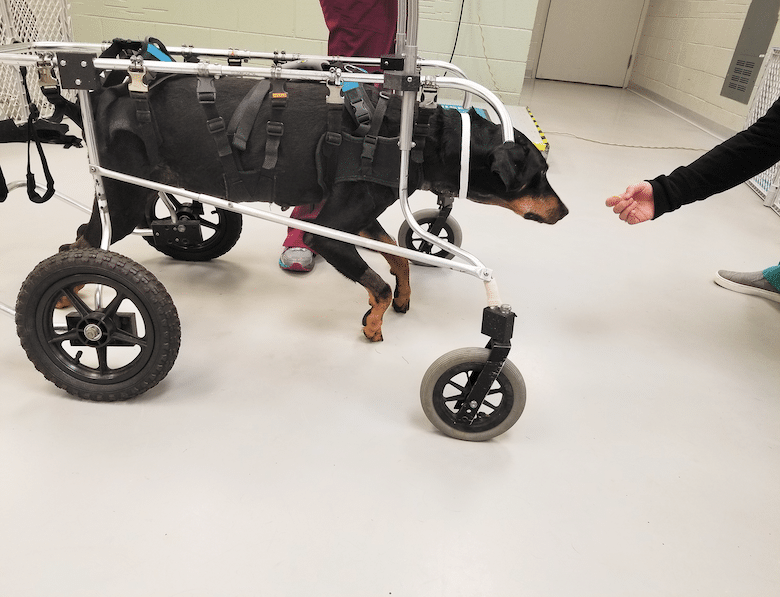
Courtesy Marti Drum | University of Tennessee
Structured exercise generally looks like a rehabilitation specialist helping you to support your dog through exercises at the clinic as well as homework assignments to be completed daily between sessions.
“We do floor exercises that are targeted at each patient’s problem areas to improve the tone of the muscles supporting their injured joints as well as increasing range of motion, nerve function and synovial fluid production,” Jo explains.
Veterinary rehabilitation specialists may also involve treatments, such as massage and acupuncture.
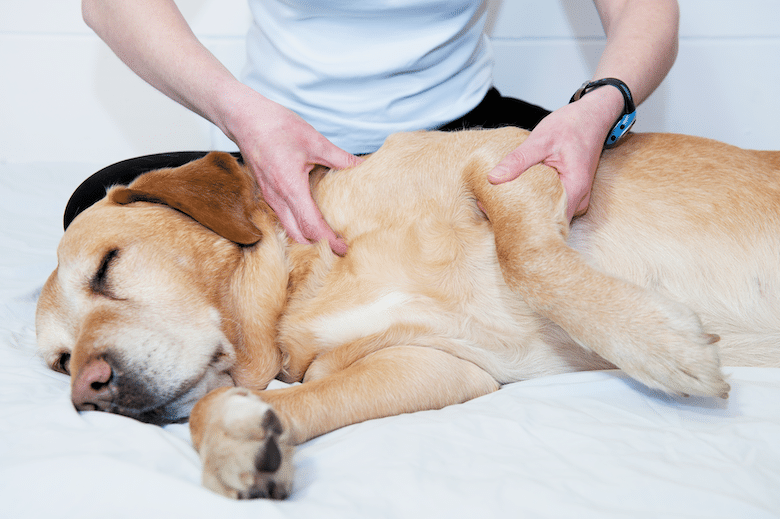
Photo: BanksPhotos | Getty Images
How to find a professional
If you think your dog could benefit from physical therapy or has upcoming orthopedic surgery, it’s time to find a certified professional for your dog to work with. Look for veterinary providers who have been certified, who are University of Tennessee’s Certified Canine Rehabilitation Practitioners (CCRP) or are Canine Rehab Institute’s Certified Canine Rehabilitation Therapists (CCRT)/Canine Certified Rehabilitation Assistants (CCRA). Jo highlights that “things in veterinary medicine are not as closely controlled as they are in human medicine, so it’s a good idea to verify that they have the training they say they do.”
The importance of working with a certified professional really comes down to the care that your dog is going to receive.
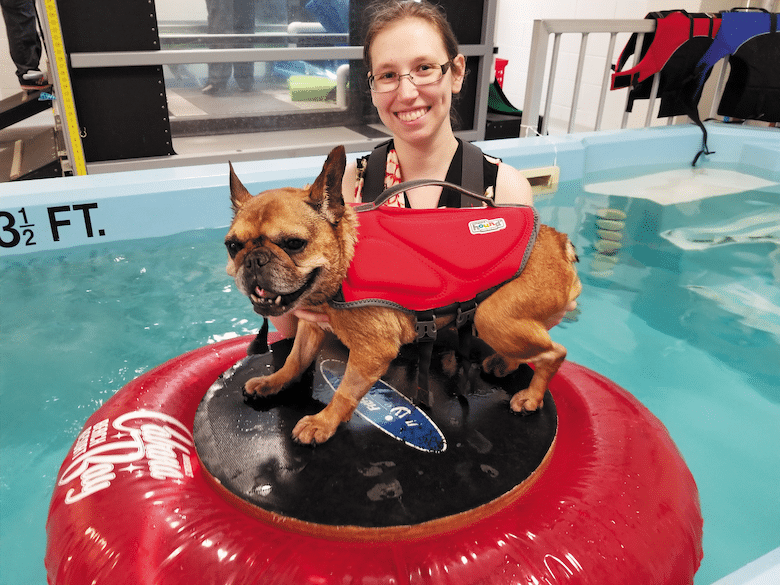
Photo: Chris-mueller | Getty Images
“Canine rehab is not a one-size-fits-all specialty. For example, while range of motion and stretching is very important in fractures that involve the joint, such as elbow fractures, young dogs cannot be rehabilitated the same way as skeletally mature dogs, as the young pups’ soft bones can result in implant failure if weight-bearing exercises are initiated too early,” Dr. Drum explains.
Certified veterinary rehab professionals will be able to take your dog’s age, breed type and other health conditions into account when developing an appropriate treatment plan. Dr. Blackwelder also highlights the importance of working with a certified professional to help families set realistic expectations. She says, “A lot of people are reading the internet, and they are reading the miracle stories, and we need to be optimistic and realistic about the outcome and have appropriate goals.”
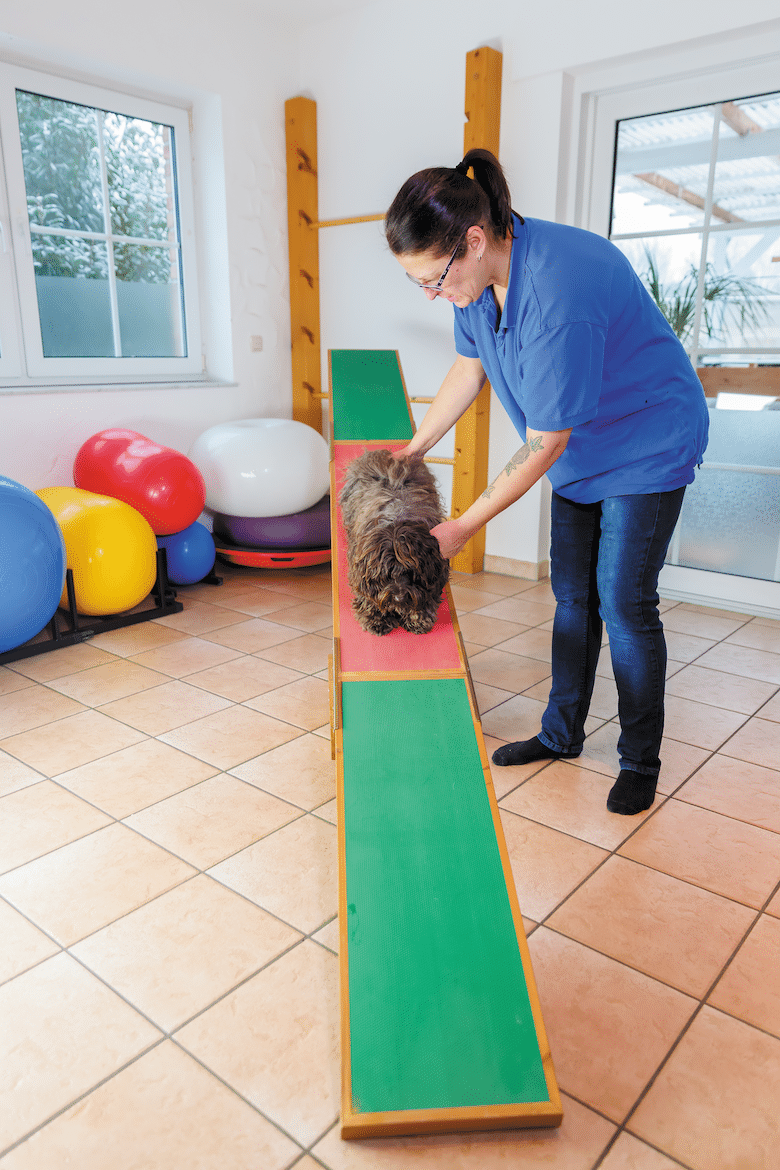
Physical therapy, like structured balance and exercise activities, will help your dog recover more quickly and completely. Courtesy Marti Drum | University of Tennessee
For example, it’s very different to rehabilitate a dog to be comfortable going on casual walks with the family as opposed to a dog trying to go back to competition obedience. The key to physical therapy being successful is consistency and dedication.
Dr. Drum advises, “Rehab works best when therapy is regular, both with clinic visits and ‘homework,’ aka the home exercises programs that are critical.”
You can’t just send your dog to physical therapy; you have to commit to doing the rehab work at home as well. Physical therapy is a lot of work but when done properly can be life changing for helping dogs return to full function.
Top photograph: chris-mueller | Getty Images
The post Let’s Get Physical —Therapy, That Is by Sassafras Lowrey appeared first on Dogster. Copying over entire articles infringes on copyright laws. You may not be aware of it, but all of these articles were assigned, contracted and paid for, so they aren't considered public domain. However, we appreciate that you like the article and would love it if you continued sharing just the first paragraph of an article, then linking out to the rest of the piece on Dogster.com.
Poop4U Blog
via www.Poop4U.com
Sassafras Lowrey, Khareem Sudlow



No comments: